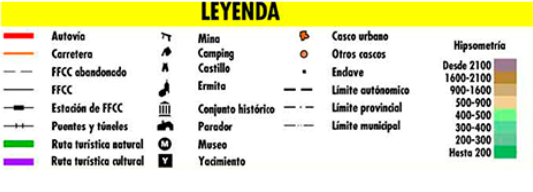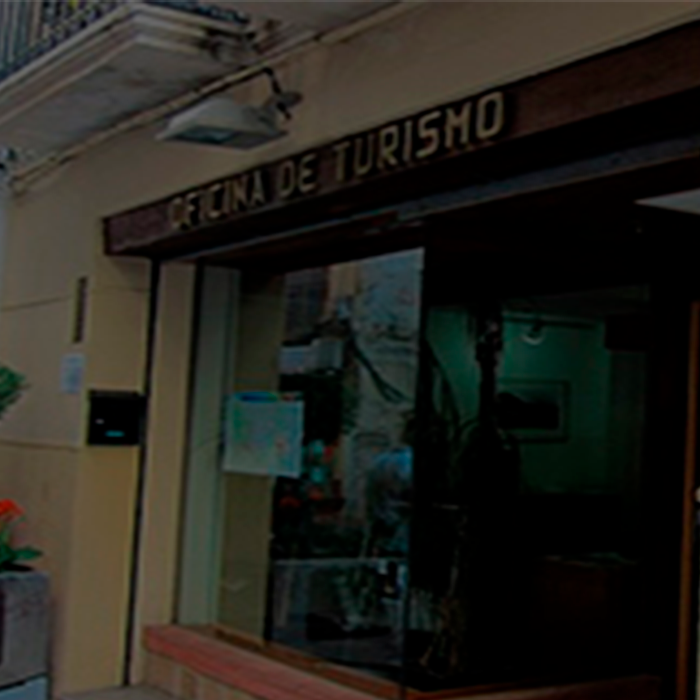
Sierra Magina Natural Park
Occupying the central position of the province of Jaén, the Sierra Mágina Natural Park rises up like an isolated massif, surrounded by a sea of olive trees. This natural park is home to a great diversity of landscapes, which can be discovered through hiking or cycling. The Sierra de Andújar Natural Park, in the middle of the mountain, is a magnificent example of a Mediterranean ecosystem. In this environment you can see the most extensive patches of natural vegetation in Sierra Morena.

A unique mountain in southern Spain. Most of the 20.000 Ha. (47.000 ac) of the Park are located in an area of mountain peaks of great ecological value. It is home to many endemic flora species. Sierra Mágina constitutes an ideal habitat for many animals and is believed to have the greatest concentration of golden eagles (Aquila chrysaetos) in Europe. Other attractive features of the area are its singular geological formations: limestone pavements and unusual karst landforms and sinkholes. Prehistoric settlers chose many of the caves abounding in the area as symbolic sanctuaries and as military posts to control neighbouring valleys. There are many caves and rock shelters with wall paintings —Cueva de la Graja ('Rook Cave') in the district of Jimena and Cueva del Morrón in the district of Torres— and an Iberian archeological site in Cerro ('hill') Alcalá, in the district of Torres as well.
This massif is the highest one in the province of Jaén. The peak of the Mágina mountain reaches an altitude of 2.167 metres (7.109 ft) above sea level. For this reason, the Park is frequently visited by mountain climbers eager to crown this and other peaks.
The whole area is a mountainous region considered unique among all Andalusian protected spaces, both on account of its natural diversity and of its cultural and ethnological significance.
These montains constitute the vanguard section of a massif descending into the river Guadalquivir Valley. They are surrounded by groves of olive trees, from which is obtained a first quality extra virgin oil, certified by the Protected Designation of Origin 'Sierra Mágina'.
The Park has over 1.290 catalogued vegetal species. In the lower areas we find agricultural lands, olive tree plantations mainly. In the middle-height elevations there are mixed forests of holm trees (Quercus ilex), Portuguese oaks (Quercus faginea) and maple trees (Acer campestre), mingled with different types of shrubs, such as junipers (Juniperus), Tetraclinis (Tetraclinis articulata) —an evergreen conifer of the cypress family—, teberynths (Pistacia terebinthus) and common hawthorns (Crataegus monogyna). In the upper heights, the vegetation is mainly composed of savins (Juniperus sabina) and some areas of black pines ('Pinus nigra'), such as those in the 'Gargantón' woods.
The most valuable species for science are found in the higher areas. These species are endemic to Sierra Mágina, found nowhere else in the world: Jurinea fontqueri, an endemic type of thisle found only in this Natural Park, or the Lithodora nitida, the hedgehog plant (Erinacea anthyllis), the Vicia glauca, the 'Junírea fontqueri' (in danger of extinction) and the Arenaria alfacarensis. One of the most interesting plant formations are the riparian oleanders (Nerium oleander) on the banks of the river Cuadros and the teberynth (or turpentine trees, Pistacia terebinthus) on the Carluco mountain.
One may find up to 27 different species of mammals, including Spanish ibices (wild goats, Capra pyrenaica), boars, wildcats (Felis silvestris), badgers (Meles meles) and genets (Genetta genetta). The Park is also home to two endemic insects: the Eumigus monticola, a rare type of grasshopper, and the purple-coated butterfly (Lycaena alciphron).
As a reminder of traditional sheep- and goat-breeding in the area, mention should be made of two domestic species now threatened by extinction: the Andalusian white goat and the black-eyed sheep.
Up to 25 species of reptiles and amphibians have also been catalogued, including the Betic midwife toad (Alytes dickhilleni), the Natterjack toad (Epidalea calamita), the Ocellated lizard (Timon lepidus), the viperine watersnake Natrix maura, the Montpellier snake (Malpolon monspessulanus) and the Ladder snake (Rhinechis scalaris).
The whole region of Sierra Mágina on the whole proves as interesting as the natural park itself. It was the former natural frontier separating the Muslim and Christian territories from the 13th to the 15th centuries. For this reason, the whole region is imbued with a medieval atmosphere that can still be felt in many towns' little streets and castles. Sierra Mágina still preserves the turrets of Bélmez and Cuadros, the castles of Bedmar and Garcíez, Jódar and Albanchez de Mágina, and the remnants of the Muslim castles and town-walls of Jimena and Cambil.
The area is full of legends and mysterious folk tales. The paranormal phenomenon of the Bélmez faces is perhaps the clearest example of the region's enchanted essence. Forty years after some mysterious faces appeared on the floor at María's home in Bélmez de la Moraleda, they still attract many a curious visitor and is the object of a scientific and parapsychological studies. The phenomenon has been proven not to be a scam, even if nobody has actually been able to explain the origin of these mysterious faces.
The local economy is strongly agricultural, depending mainly on olive and cherry trees, and asparragus growing. The towns of Jódar and Cabra de Santo Cristo have traditionally been reputed for their hand-made products of esparto-grass (Stirpa tenacissima), while the towns of Mancha Real and Huelma have recently provided much employment in the furniture industry.
What to do?
Routes by car
Trekking
Bike routes
Routes by car
Trekking
Bike routes
What to do?
Ascent to Pico Magina
Various populationsPeralejo Trail
Various populationsPuerto de la Mata Pass Trail
Various populationsRuta: Cambil-Mata Bejid-Centro ...
Various populationsTorres-Hondacabras-Fuenmayor-P ...
Various populationsMancha Real-Cumbre de Almadén- ...
Mancha RealRuta Cabra del Santo Cristo
Bélmez de la MoraledaJódar Old Railway Station Rout ...
Various populationsCambil-Mata Bejid Visitor Cent ...
Various populations
Natural enclaves
Oleanders of the river Cuadros ...
Bedmar y GarcíezCaldera del Tío Lobo y el Zurr ...
Albanchez de MáginaCaño del Aguadero
Bedmar y GarcíezRoad to Cabra de Santo Cristo
Cabra del Santo Cristo
Monuments
Arch of the Incarnation
PegalajarPegalajar Town Hall
PegalajarCastillo de Albanchez de Mágin ...
Albanchez de MáginaCastillo de Bélmez de la Moral ...
Bélmez de la MoraledaCastillo de Jimena
JimenaCastillo de Jódar
JódarLas Peñuelas Castle
PegalajarCastillo de Mata Bejid
CambilSolera Castle
HuelmaCastillos de Cambil y Alhabar
CambilCortijada Mata Bejid
CambilCueva de la Graja
JimenaHermitage of Nuestra Señora de ...
HuelmaErmita de Nuestra Señora de lo ...
JimenaFuente de la seda
Albanchez de MáginaFuente de los siete caños
Albanchez de MáginaCambil Hospital
CambilIglesia de la Asunción
JódarIglesia de la Inmaculada Conce ...
HuelmaChurch of the Holy Cross
PegalajarIglesia de Santiago el Mayor
JimenaIglesia Parroquial de Santo Do ...
TorresIglesia Parroquial de Nuestra ...
Bedmar y GarcíezIglesia Santuario del Cristo d ...
Jódar





